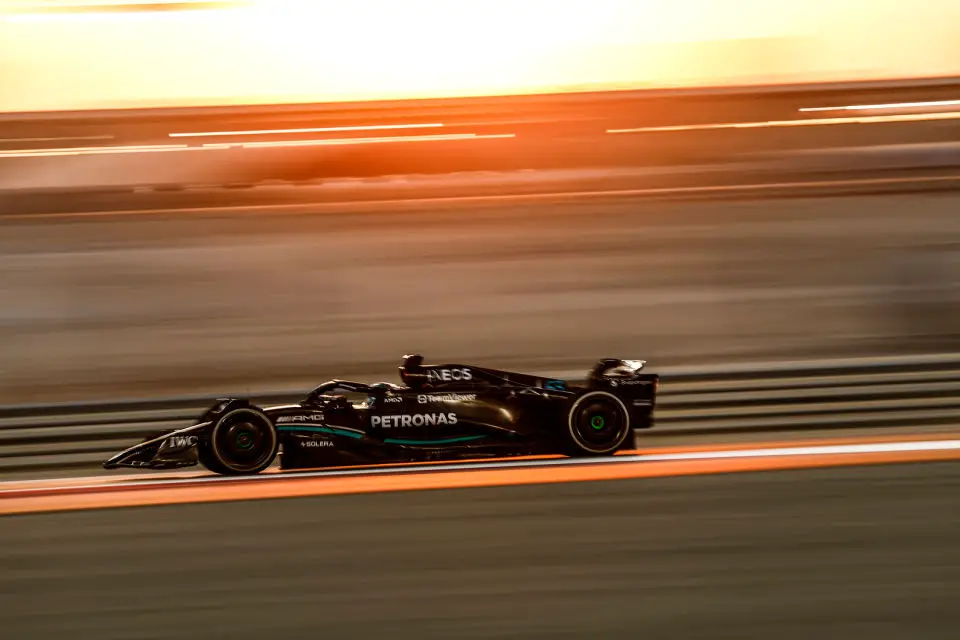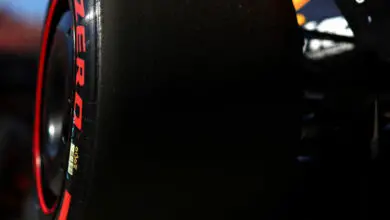Qatar GP Tyre Limit Shakeup: F1’s Safety-First Approach in Response to Pirelli Tire Issues
The recent Qatar Grand Prix saw a significant change in race strategy following unexpected tire issues. The FIA’s decision to enforce a maximum of 18 laps per tire set marks a new era in F1 racing, prioritizing safety and challenging teams to adapt.
Key Takeaways:
- Safety-First Decisions: The FIA’s immediate response to the tire tread separation issues discovered by Pirelli during training was the imposition of a strict 18-lap limit per tire set. This decisive action was aimed at preventing accidents and ensuring the safety of drivers and teams.
- Track Limit Adjustments: To reduce tire damage, the FIA made specific changes to track limits in turns 13 and 14, extending them by 80 centimeters. This adjustment was designed to prevent drivers from using the high curbs, identified as a major factor in the rapid tire wear.
- Future Implications: The 2024 season will see the Losail racetrack undergo significant modifications. These changes, necessitated by the tire issues, will involve altering curbs and possibly transforming some asphalt run-off areas into gravel, considering the requirements of both F1 and MotoGP.

The recent Qatar Grand Prix has been a game-changer in the world of Formula 1 racing, largely due to unexpected tire issues. During the practice session, Pirelli, the tire partner for F1, observed alarming signs of tread separation on tire sets used beyond 20 laps. This prompted immediate action, with track limits being adjusted to dissuade drivers from exploiting the high curbs, contributing to the tire degradation.
Saturday’s sprint, which was supposed to be a trial for the new track limit adjustments, turned out inconclusive due to three safety car phases limiting race pace to only twelve laps. The tires used during this sprint showed continued signs of tread separation, confirming that the issue was widespread across the racetrack.
Despite these precautions, drivers continued to exceed track boundaries, leading the FIA to prioritize safety by enforcing a new rule – a maximum of 18 laps per tire set. Any violation of this limit would result in a black flag and disqualification.
The implications for the 2024 season are significant. The Losail racetrack operator faces the complex task of modifying curbs across the circuit. This modification is crucial, not only for F1 but also for MotoGP, and may involve changing some asphalt run-off areas to gravel beds.
Moreover, Pirelli, amidst this turmoil, faces its own challenges. Their tire issues have cast a shadow over their reliability, with the need for improvement being starkly evident. This situation has raised questions about their future as F1’s tire supplier and their ability to maintain confidence in their products.
The strategic implications of these developments are profound. Teams and drivers will have to navigate these new regulations, balancing speed and tire durability. The introduction of mandatory pit stops will add an extra layer of complexity to race strategies, making the upcoming races even more intriguing for fans and teams alike.
In conclusion, the Qatar Grand Prix has set a precedent for how tire safety is handled in Formula 1. It’s a clear indication that the sport is evolving, with safety as a paramount concern, and it sets the stage for an exciting and unpredictable future in F1 racing.


